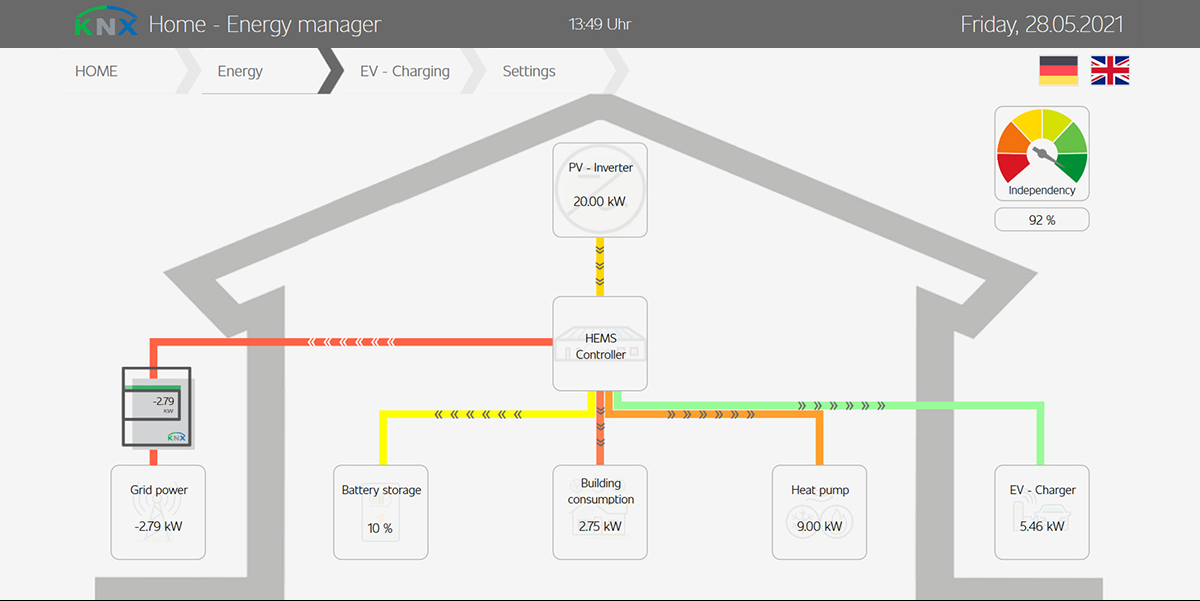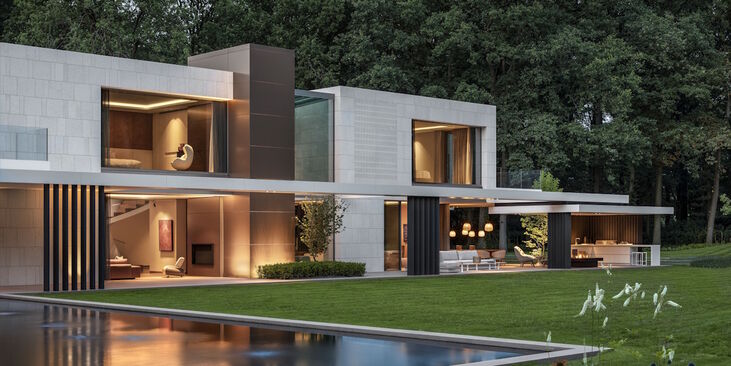14. Jun 2021
KNX-driven climate protection: KNX takes energy management to a new level

Energy management systems based on KNX: The latest solutions and projects demonstrate great potential for active energy savings and sustainability.
Energy management is playing an increasingly central role in smart home projects. Cost savings and the protection of the climate using efficient, sustainable generation, storage and use of energy are the main drivers here and have recently become reality thanks to KNX, the world's leading technology standard for building automation. But also with the increasing spread of electric cars, which are charged in the garage at home and require a lot of energy, efficient energy management in smart homes is becoming more important than ever in order to avoid bottlenecks in the power supply by means of intelligent load management.
KNX HEMS devices conquer the market
Since years, there is a vast portfolio of HEMS devices available on the market. And recently, due to the increased interest in this domain, new KNX solutions and KNX devices are being released, amongst others "Eisbär", "EibPC", etc. This new type of solutions and products leads the way in this respect and demonstrates how KNX-based holistic home energy management systems (HEMS) have been created for smart buildings, allowing great potential for energy savings to be tapped.
Any KNX HEMS controls the interaction of all energy producers and consumers in a smart home. By connecting all building technology systems and smart devices with KNX, dynamic energy consumption control of all household appliances and installations can be achieved and thus one's own electricity, produced for example by a photovoltaic system, can be intelligently routed to where it is needed. Excess energy is automatically stored temporarily so that it can be used at a later point in time. This significantly reduces the cost of purchasing electricity from external energy providers. Many KNX compatible HEMS offer their users a comprehensive visualisation of all relevant data and thus an always up-to-date overview of the energy balance in their smart homes as well as the possibility of making their own adjustments to the energy management.
KNX-based energy management has proven itself in real projects with up to 60% energy savings
The most recent smart home projects in this domain are already benefiting from efficient, improved and new ideas for energy management with KNX. Among other projects, a residential project in Gammelsdorf (Germany) is to be highlighted. Here it was necessary to compensate for the weak line network of the local energy supplier by using a photovoltaic system and a combined heat and power plant. With "EibPC" as HEMS based on KNX, the two power generators are controlled according to the building's actual heat or electrical energy requirements. An additional gas boiler is adjusted depending on the season for heat and energy generation or used exclusively for heat generation on low-load days. The combined heat and power plant also serves as a backup power supply in the event of a power failure, in which case all high-load energy consumers in the building are automatically switched off.
Thanks to KNX-based energy management, up to 60 % of the energy can be saved, as the ZVEH's E-House shows. With the E-House, the association is demonstrating the high degree of networking, automation and energy efficiency in smart homes that is already possible today with KNX. From photovoltaics to electricity storage, intelligent ventilation to fuel cells, communicative kitchen appliances and active assisted living, a wide variety of devices and functionalities were clearly networked via KNX using "Eisbär" as HEMS.
Thanks to KNX: Smart homes and buildings become sustainable for a smart living
"Smart buildings based on the KNX standard and the numerous products and solutions from the KNX universe not only offer more comfort and increase the quality of life, but also make an important contribution to climate protection thanks to the strengths of KNX in energy management. As a global player in the field of smart building technologies, the topic of sustainability has played a prominent role for KNX for years, as we know about the importance of the building sector in the fight against climate change. We are pleased to be able to contribute to a more sustainable world, and therefore to a more smart living, through the technological progress of KNX", explains Franz Kammerl, President of the KNX Association.
Highlights
-
 News
NewsSave 30% on an ETS6 license in May
For a limited time, we’re offering 30% discount on all cloud versions of ETS6 licenses. Don’t miss this exclusive deal this ... -
 News
NewsThe KNX Journal 2025 is now available
The latest edition of our annual smart home and building solutions magazine has arrived. The KNX Journal 2025 offers ... -

